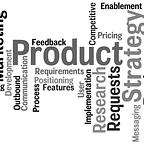How to Measure and Track Your SaaS Product Part- 1
Software industry has made significant strides over the past decade. During this period industry has seen significant changes in both the business and technology aspects. On one hand industry has relentlessly moved towards productization of services (where the infrastructure management services have transformed into products through cloud offerings), on the other hand product industry have moved into servitization with Adobe and Salesforce leading the pack through moving to subscription model; and other industry majors following closely. This servitization of Software products is often known as ‘SaaS’ (Software as a Service).
What is SaaS:
SaaS is an approach of enabling customers to use the product in a way that they pay to use the product rather than owning the product perpetually.
While this business model innovation has created new growth engines for organizations like Miro, Atlassian offering products at low cost, reducing the entry barrier for customers and improving conversion but at the same time it has led to customers moving in the direction of most innovative offerings. This has made it necessary for organizations to constantly track the performance and understand their customers more intimately.
What matters for SaaS:
Three key components that define the success or failure of SaaS are:
- Positioning
- Packaging
- Pricing
Positioning: Positioning is the communicated value proposition the SaaS product offers. For example the value proposition offered by cloud service providers is ability to use the cloud infrastructure without lead time of procuring the infrastructure components, setting those up and paying only for the components that you use.
Packaging: The product packages have to be aligned with user persona. Packaging essentially means creating the tiers of product so that it reflects the set of required features for various customer personas. e.g. Atlassian defines its packages for Jira based upon team size. The packages are defined in terms of features and number of user licenses because the potential value derived increases as the team size increases.
Pricing: Pricing is the key component, and the closely it aligns with price sensitivity studies on users the higher the probability of this resulting in a competitive advantage improving the market penetration and the conversion rate.
While these factors are key for the success of product offering there is a need to closely track the metrics that are leading indicators of the direction product is taking. These metrics are:
- Customer Acquisition Cost (CAC): Cost of acquiring a new customer. This is essentially the total of sales and marketing cost over a period averaged over total new customers acquired during this
- Life Time Value (LTV)
- Churn Rate
As in any area, the businesses that minimize costs and maximize the customer’s life time value are the ones that are most successful. But how much should be the difference between LTV and CAC?
As a typical rule of thumb the healthy ratio for SAAS product is:
Thus for an organization the key focus area would be to increase this ratio, and one way to do that is to improve LTV. The factors that impact LTV are:
- Churn rate: The higher the customer churn the smaller the LTV.
- ARPU (Average Revenue per User): The higher the APRU, higher is the LTV
The other ways to increase the ratio is by reducing the denominator i.e. CAC. While it is not suggested approach to reduce the CAC as this might impact the customer acquisition and conversion, however CAC optimization can include exploring low cost customer acquisition channels like digital, word of mouth, references, freemium and partnerships.
Thus while SaaS products offers significant value for customers and significant upside to SaaS providers. Building SaaS requires utmost discipline in understanding the customer persona and defining the packaging that aligns with the customer needs. This effort would reflect itself in the positive trends in metrics like pricing, LTV, CAC and churn; and would lay foundation for sustainable SaaS business in long term. We will look at more ways to align LTV, optimizing pricing and packaging in line with customer personas and their relative preferences in next articles. Till then lets stay connected.
